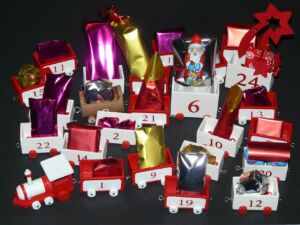Business & Education
At Christmas, when expectation is everything, the waiting is almost over
This article is more than 7 years old.
But forget about the duck and rice pudding, the really unique element of a Danish Christmas is the Julekalender

Expectation is everything (photo: Pixabay)
Advent means ‘coming’ and refers to the coming of Christ, and its sense of expectation plays a huge part in the way Christmas is celebrated in this country. While the traditions of many Christian countries allows for very little gift exchanging until the big day itself – the odd chocolate if you’re lucky – children in Denmark are so ‘presented out’ every Christmas, they often lose their enthusiasm for the practice by adulthood, although some never grow out of it.
May start in November
It starts early, sometimes in November if Advent’s first Sunday falls in that month. On that day, Danes light the first of the four candles on their adventkrans, an advent wreath, which is hung from the ceiling with red or purple ribbon. Children unwrap the first of their Adventskalender gifts – presents for each of the four Sundays.
December 1 marks the first day of the Christmas month. This is the day on which Danes light the Kalenderlys, the calendar candle, for the first time until the first of the 24 numbers marked onto the calendar melts off. Then, the first calendar gift is opened. And in the evening, the family gathers in front of the television with some brown biscuits and vanilla wreaths to watch the first episode of their favourite ‘TV Julekalender’.
Germany is to blame
The aforementioned traditions are an integral part of the Danish Christmas celebrations and all forms of the Christmas calendar, the Julekalender. The origins of the julekalender are unclear, although it appears that the first printed paper calendars were introduced to the Danish market from Germany in 1932, and that the tradition of placing little gifts in the calendars began shortly after the Second World War. The calendar candle, meanwhile, entered the markets in the late ‘20s or early ‘30s.
The paper calendars, which are commonplace across the Christian world, are made of card and have 24 small numbered windows for each day of December until Christmas Eve. Behind each window hides a little gift, often in the form of a small chocolate, or a seasonal picture.
Packed carefully for spoilt brats
More unique to Denmark is the Pakkekalender, which is made of embroidered material into which 24 numbered gift packages have been sewn in. Every morning, the children can unwrap their gifts or find the surprise hiding behind the shut window.
These types of julekalender are not only for children, however, and it is common for adults to arrange Christmas calendars for their friends, relatives and partners. And in addition to the usual chocolate calendars, adults can also purchase scratch cards and other various forms of calendars for themselves that may be less appropriate for young children.
Entertaining us since 1962
The first TV Julekalender was broadcast in 1962 on DR, which at the time was the only national television channel (broadcasting for just ten hours a week). Since then, every Christmastime has offered a daily trinket of a story. And this year, the supply of television Christmas calendars has reached a new level, with seven Christmas calenders being aired on DR and TV2 channels. But these are expensive to produce, and all but one are reruns.
Until 1990, DR was the only channel broadcasting julekalenders. Bear in mind, however, that it was the only Danish channel that existed until 1988, when TV2 ended DR’s monopoly on national television. In 1990, TV2 broadcast its first julekalender, entitled ‘The Julekalender’.
The most popular ever
This version was written and performed by a trio of Danish comedians called De Nattergale, and it remains the most popular julekalender ever aired on Danish television, according to a 2010 survey of the readers of BT tabloid. It has been re-aired five times, and released both on VHS and DVD.
‘The Julekalender’ on TV2 is timeless, in a large part because of the way it epitomises the black humour of Danish culture. Furthermore, it has a unique and entertaining concept of Danglish – a mix of Danish dialects and English – which is exemplified through a parody wiki article in Spademann’s online encyclopedia, which describes the show: “The Julekalender is small tv-serie consisting of twenty fire short afsnits that are usually sendt on TV2 during December. The formål with this julekalender is that julekalenders shall not only be something that børn kan se. The kalender has many charactaristic træk, the most well-kendt being that the afsnits are so small that there is only time for a sang and a short visit at the local kartoffelavlerfarm before the speaker in an ikke understandable sprog tells you to wait until tomorgen.”
Not dissimilar to Pixar
This language is used throughout the show, so therefore can only truly be understood by people with an understanding of both Danish and English. Furthermore, as with most of the older julekalender, the humour is directed towards adults and may not be understood by most children. Nevertheless, these shows were an integral part of growing up for many Danes, who sat and watched and laughed with their parents before they were truly old enough to understand the humour and the language.
Today’s television julekalender are accompanied by paper calendars that parents can buy for their children, as well as merchandise. The calendar gives some form of clue each day as to what will be in that evening’s episode.










































